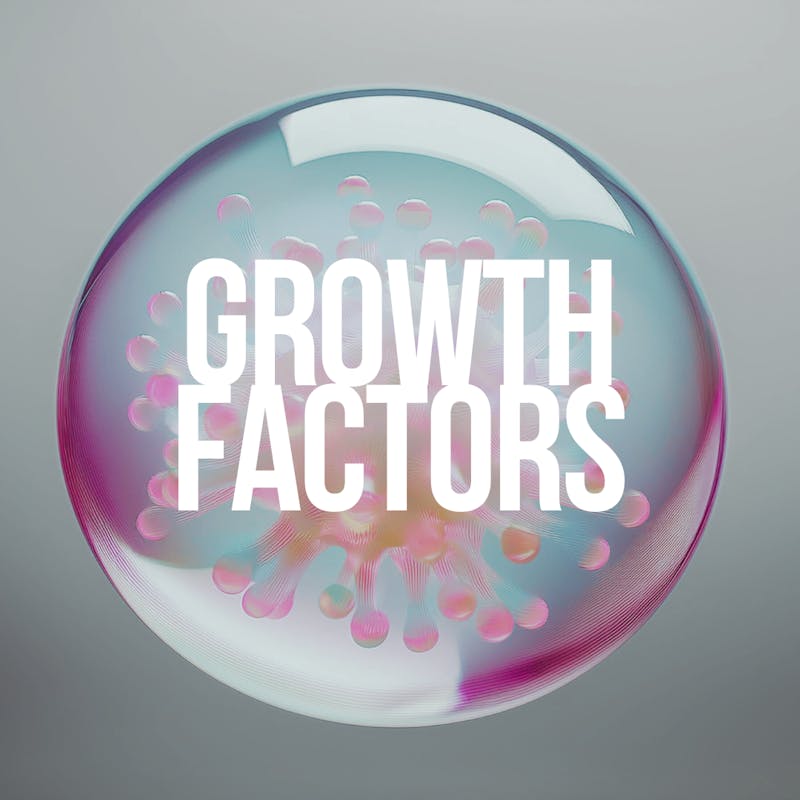
In the ever-evolving field of aesthetic treatments, using growth factors has become a cornerstone for enhancing skin rejuvenation and promoting healing. Whether you're undergoing microneedling, facial rejuvenation, or other advanced skin therapies, understanding the differences between the growth factors used in these treatments can help you make more informed decisions. In this blog, we'll explore the key differences between Platelet-Rich Plasma (PRP), Platelet-Rich Fibrin (PRF), exosomes, and other growth factor serums commonly used in aesthetic treatments.
1. Exosomes
- Overview: Exosomes are small vesicles that contain a high concentration of growth factors, cytokines, and genetic material. They are derived from stem cells and have shown significant potential in skin rejuvenation.
- Effectiveness: Exosomes are considered one of the most advanced and potent options available, offering rapid and visible results. They promote deep skin regeneration and improve skin texture, elasticity, and hydration.
- Results: Users often experience more dramatic improvements in skin quality with fewer treatments compared to other growth factors.
- Notes: Exosomes are great for Microneedling; however, They cannot be injected like PRF and PRP. Which functions as an all-natural treatment for Hair Restoration, revolumizing mid-face tissue depletion, and treating dark under-eye circles.
2. Platelet-Rich Fibrin (PRF)
- Overview: PRF is a second-generation platelet concentrate that contains a high concentration of growth factors and fibrin, which acts as a scaffold for wound healing and tissue regeneration.
- Effectiveness: PRF is more effective than PRP due to its longer release of growth factors, leading to more sustained and enhanced results in skin rejuvenation.
- Results: Provides a gradual improvement in skin texture, tone, and collagen production over time.
- Notes: PRF yields better results than PRP because of the gradual release, whereas PRP is an immediate absorption. It is also known for mild discomfort versus intense stinging experienced during and after PRP treatments.
3. Platelet-Rich Plasma (PRP)
- Overview: PRP is derived from the patient’s blood. It contains concentrated platelets and growth factors that stimulate collagen production and tissue repair.
- Effectiveness: PRP is widely used and effective for improving skin texture, reducing fine lines, and promoting a more youthful appearance. However, its effects are generally less pronounced than those of exosomes and PRF.
- Results: Typically requires multiple treatments to achieve desired results, with noticeable but more subtle improvements.
4. Synthetic Growth Factor Serums
- Overview: These serums are formulated with lab-created growth factors that mimic the natural proteins found in the body. They are often used as an adjunct to microneedling to enhance the procedure's effects.
- Effectiveness: While synthetic growth factors can be effective in promoting skin healing and collagen production, they generally offer less dramatic results compared to biological sources like PRP or exosomes.
- Results: Best suited for mild to moderate skin concerns, with gradual improvements over time.
Key Points:
- Similar Goals: All these growth factors aim to boost collagen production, enhance skin healing, and improve skin texture.
- Varied Outcomes: The effectiveness varies, with exosomes typically offering the most significant results, followed by PRF, PRP, and synthetic growth factors, with the exception of PRF used for volume-based concerns (injections for dark circles and volume loss).
- Treatment Plans: The choice of growth factor may depend on the patient’s skin condition, personal preferences, desired outcomes, and budget, as more potent options like exosomes can be more expensive.
Using these growth factors in combination with microneedling and other aesthetic treatments can lead to better, longer-lasting results, with the potential for more significant skin improvements compared to treatment alone.





